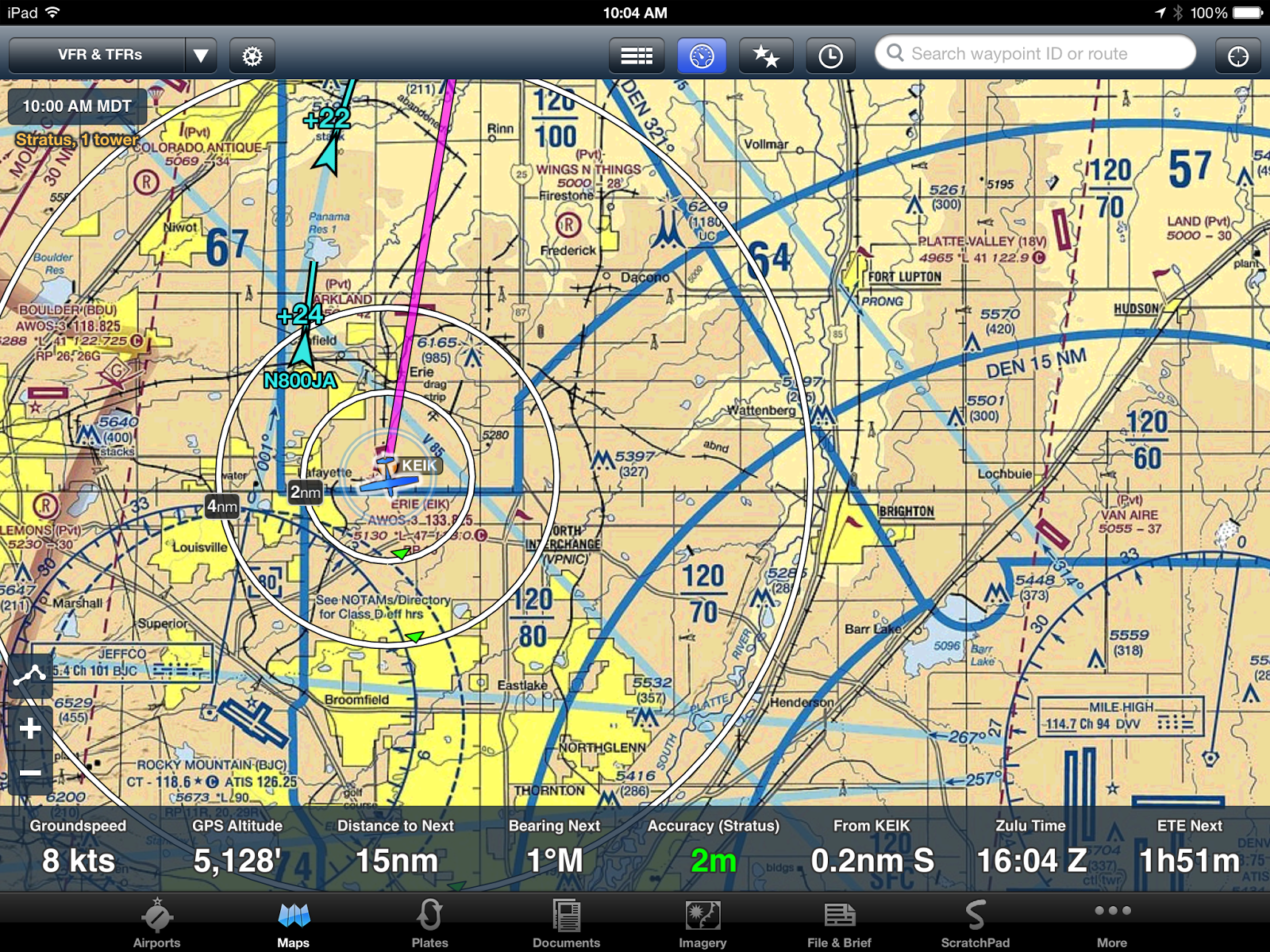I recently had one of these nights. I was scheduled to take an an IFR training flight with my CFII, Tommy. I have been doing most of my instrument training flights at night because 1) Like most places in the summertime, the weather here in Colorado is generally better early in the day and late in the day (less turbulence, lower chance of high-based TStroms, calmer winds, etc.) and, 2) that's about the only time in a day that I can manage to find the free time to fly.
One recent evening I was out at the airport getting the plane ready before Tommy showed up and caught this beautiful sunset. It seemed to frame the plane perfectly against the pink clouds and backdrop of Colorado's Front Range mountains.
The night air was cool and relatively crisp for a late June evening, around 65° or so, with a light 7 knot breeze out of the east. We left Erie (KEIK) and I picked up our IFR to Cheyenne (KCYS), 45 minutes north. We had filed KEIK LPORT V81 CYS KCYS and, of course, received "present-position direct" GLL V89 CYS KCYS, which took us a bit out of our way but it's always good practice dealing with an ATC re-route. Half way to Gill (GLL), ATC gave us a direct CYS which would work out nicely for the DME arc to the ILS27 at Cheyenne.
The routing put us about midway between CIKNU and LECID on the 15 nm DME arc, which was different than what we had planned but it still worked well. I intercepted the arc and was able to track it well within the required 1 nm despite the ever-present Wyoming wind. The lead radial on the ILS 27 at CYS is the 104° and it dumps you out on a LOOONG 15+ mile final, at 7,800 feet MSL mind you (airport elevation is 6100 feet MSL) - plenty of time to get stable and make the approach. A touch of the wheels and we were on the go, VFR this time back to Erie in the smooth, cool mountain air.











